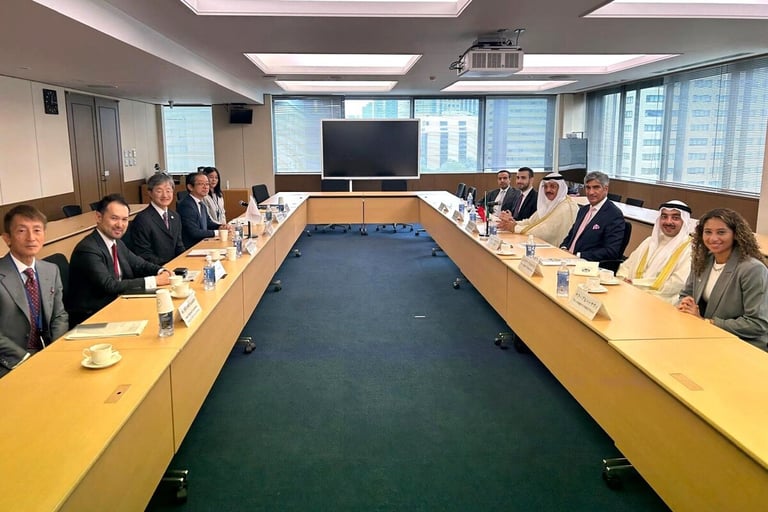IT spending in the Middle East and North Africa (MENA) region is projected to hit $169 billion in 2026, marking an 8.9 percent increase over 2025, according to the latest forecast from Gartner, Inc.
This continued growth highlights the region’s ongoing digital transformation and rising demand for advanced technology infrastructure.
“The MENA region is rapidly emerging as a global tech powerhouse, with the Gulf Cooperation Council (GCC) leveraging its stability, infrastructure and forward-looking policies to attract global partners and build digital skills that empower innovation and support resilient AI-driven economies,” said Mim Burt, Practice VP at Gartner.
“Even amid global economic and geopolitical uncertainty, chief information officers (CIOs) in MENA are making strategic investments in AI, intelligent automation and multi-cloud strategies, while strengthening cyber defenses and advancing talent upskilling. These efforts are not only driving innovation and economic diversification but also contributing to the region’s projected IT spending growth in 2026.”

Read: Worldwide IT spending to grow 9.8 percent to $5.61 trillion in 2025: Report
Data center systems lead growth despite cooling pace
Data center systems are expected to remain the fastest-growing segment in 2026, with spending forecast to increase by 37.3 percent. Although this represents a slowdown compared to the segment’s 69.3 percent growth in 2025, it still reflects strong ongoing investment.
The moderation signals a shift from the rapid infrastructure build-outs of recent years toward more incremental and sustained investments in capacity and modernization.
According to the MENA IT Spending Forecast for 2025–2026, total IT expenditure is projected to reach $155.16 billion in 2025, reflecting an 8.8 percent growth, and increase further to $169.02 billion next year with a similar growth rate of 8.9 percent.
Data center systems are expected to see the most dramatic growth, with spending rising from $9.46 billion in 2025 (a 69.3 percent increase) to $12.98 billion in 2026 (up 37.3 percent). Spending on devices will account for $32.79 billion in 2025 with a 6.7 percent growth, climbing to $35.23 billion in 2026 with a 7.4 percent growth.
Software spending is projected at $17.95 billion in 2025, growing by 11.7 percent, and increasing to $20.45 billion in 2026 with a 13.9 percent growth rate.
IT services will see steady growth, from $34.06 billion in 2025 (6.9 percent) to $36.89 billion in 2026 (8.3 percent). Communications services, the largest spending category, will grow modestly from $60.91 billion in 2025 (4.4 percent) to $63.46 billion in 2026 (4.2 percent).
“Data center system spending is expected to accelerate as MENA CIOs and technology leaders invest in AI-enabled software and AI-optimized infrastructure,” said Eyad Tachwali, VP, Advisory at Gartner.
“This surge is largely fueled by pent-up demand for generative AI (GenAI) and advanced machine learning, which depend on robust computing power for large-scale data processing. Most of this demand is being driven by governments, hyperscalers, technology providers and organizations focused on developing and deploying AI models, rather than traditional enterprises or consumers.”

AI integration accelerates software and IT services investment
As generative AI (GenAI) becomes increasingly embedded in enterprise solutions, organizations across MENA are ramping up their software investments.
Software spending is expected to grow by 13.9 percent in 2026, reaching $20.4 billion. Gartner anticipates that by 2028, 75 percent of global software expenditure will go toward solutions featuring GenAI capabilities.
This surge in AI adoption is also influencing IT services spending, which is projected to rise by 8.3 percent in 2026. As organizations reimagine their operations and digital strategies, IT services will play a critical role in enabling transformation and modernization efforts across industries.
“CIOs will increasingly be offered embedded GenAI capabilities in enterprise applications, productivity and developer tools, more advanced large language models as well as AI-optimized servers to support AI-as-a-service,” said Burt. “Providers are also exploring new pricing models across software and hardware to drive revenue.”
“With the rapid acceleration of AI infrastructure and adoption in MENA, CIOs must move beyond GenAI as a productivity tool and embed it into the heart of their business strategy,” said Tachwali.
“The real competitive edge will come from building strong data foundations, composable technology platforms and cultivating AI-fluent talent — core enablers for unlocking differentiated value from AI.”

Methodology and market insights
Gartner’s IT spending forecast is based on a rigorous analysis of sales data from over a thousand technology vendors, covering the full spectrum of IT products and services.
This data is compiled using a combination of primary research and trusted secondary sources, offering a comprehensive view of market dynamics.
The quarterly forecast provides a detailed breakdown across key segments, including hardware, software, IT services, and communications, helping organizations assess risks, spot opportunities, and shape strategic decisions.








